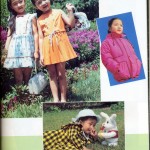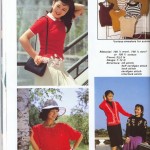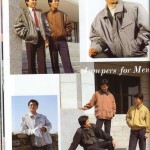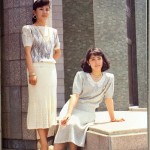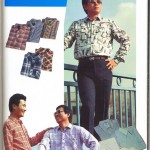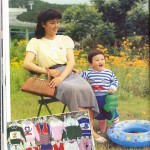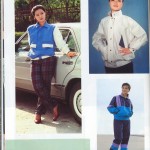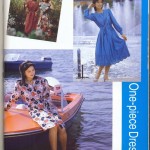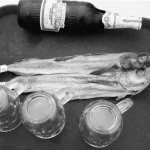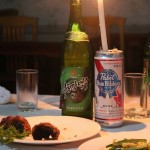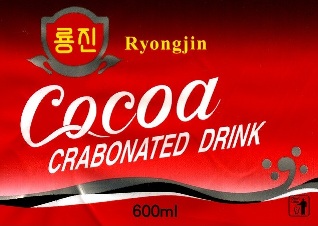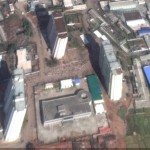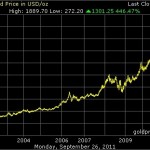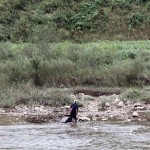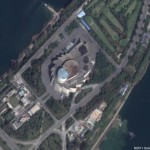North Korean Fashion Archives
Choson Exchange posted the following on their web page:
During our last trip, we met with Korea Daesong Bank, which kindly provided a product catalog from the 80s/90s of their parent company – Korea Daesong Economic Group (KDEG). While fashion definitely has moved on in Pyongyang, we thought that it might be good to share some of the products they display in their catalog – for old times sake. In case you decide that the retro look is for you, do note that KDEG is currently under international sanctions.
Choson Exchange posted the pictures to their Facebook Page, but since there are many people who cannot (or do not) access Facebook, I thought I would post the pictures here:
American beer popular in the DPRK?
Pictured above (left) is a bottle of Budweiser served with dry fish aboard the recent Mangyongbong-92 “cruise” from Rason to Kumgangsan. Learn more here. Pictured above (right) is a can of Pabst Blue Ribbon (PBR) which has been converted into a candle holder and placed next to a bottle of “domestic” Taedonggang Beer. Click image for source. Maybe the number of hipster visitors to the DPRK has increased?
Coca Cola
Forbes Magazine has a very interesting article on talks between the North Koreans and Coca-Cola! Read the full article here. I thought this would be a good time to remind readers about the DPRK’s indigenous cola:
The soda is “Crabonated” which is a pretty funny typo. Also worth noting are the lengths they have gone through to copy the Coca-Cola brand–as if they are trying to win back market-share from the firm. The colors, red, black, silver and white are the same. The familiar cursive English “C” at the beginning of the word is a close copy. They even tried to replicate the Coke “wave” by adding a literal wave in a similar curve along the bottom of the advert.
